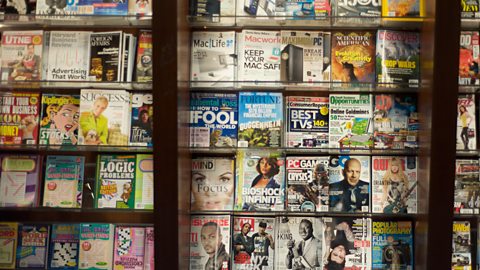Media texts are a type of persuasive text.

Examples of persuasive media texts include:
- advertisements
- reviews
- articles
- posters
- leaflets
They are often produced by:
- mass media companies such as TV and film companies
- newspaper and magazine publishers
- charities
The purpose is often to persuade us to buy products or to give to charitable causes, such as ±«Óătv Children in Need.
Here is an example of a charity campaign leaflet with typical features found in media texts
Typical layout of a charity campaign leaflet
Typical features found in media texts
- Logo – this acts to identify a brand and sometimes a company. Logos can become trusted and can even persuade us to pay more money for a product.
- Headings/headlines – these are designed to grab your attention and can feature exciting or crucial pieces of information about the product that you are being encouraged to buy or donate to.
- Sub-headings – these will be a word, phrase or sentence that is used to introduce part of a text. They can also be used to support a headline in adverts.
- Images – these will try to attract the reader’s attention. There is usually one main image and some supporting images. The supporting images will be smaller and these are known as secondary images.
- Splashes of information – these are different pieces of information that are placed around the page in order to give you shorter pieces of information at a time. They may be short sentences or quotations, and will be easy to read as they are designed to be read at a glance.
It is these features that the copywriter or creator of the text wants you to notice first.
More on Discursive, persuasive and informative writing
Find out more by working through a topic
- count12 of 13

- count13 of 13

- count1 of 13

- count2 of 13
